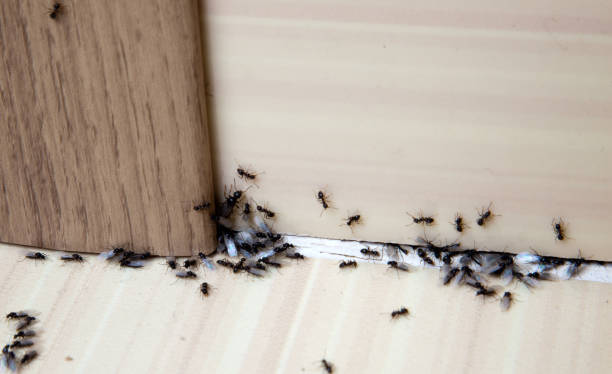If you notice increased ant activity in and around your home, a logical question to ask is what brought them there and how it could have been prevented. With a better understanding of what ants are drawn to, you can get control over a pest situation before it becomes more severe and prevent future infestations too.
So, what attracts ants in the house? Here are the top things that ants love and how you can stop them from affecting your life.
People and Pet Food
Like all living creatures, ants need food to survive. Ants are drawn to food sources that they can access, such as dry goods in your kitchen pantry, trash left outside, and pet food in bowls. Ants are most attracted to sugary foods, such as syrup, honey, jelly, and candy.
Even if you keep your food in tightly sealed containers, ants love to find spills on countertops and floors that you didn’t notice or forgot to clean up. It only takes an ant or two to discover a food source and then leave behind a scent trail to guide the rest of the ant colony to the feast you have provided.
Accessible Water Sources
Ants also need water to survive, so they seek out moisture in any form around a house. Ants need to drink water when thirsty and take it back to stow away for future use in their colonies. Ants can find water sources in a home by accessing pet water bowls, decorative fountains, and moisture left behind from leaky roofs and broken pipes. If you have a plumbing issue in your home, this is very attractive for ants searching for water.
Indoor Houseplants
Another answer to “What are ants attracted to?” is houseplants that you have lovingly placed around your home for decoration and improved air quality. Ants enjoy sweet fragrances and the dampness that houseplants provide. Indoor plants may attract other insects besides ants that leave scents and residues behind, which ants are interested in.
Safe, Warm Shelter
Ants are resilient insects that can thrive outdoors in harsh environments. But they also would love nothing more than to find a safe, warm place to live where they didn’t have to worry about predators, extreme weather, or lack of resources. Ants are attracted to openings in a home that allow them to easily get inside and enjoy a higher quality of life. Common entry points for ants in a home include foundation cracks, gaps along windows and doors, and doors left open.
How to Handle an Ant Infestation
You can do a lot to prevent an ant infestation by eliminating accessible food and water sources, monitoring your houseplants, and sealing up entry points that may lure plants inside. But if ants have already made their way into your home, you need Precise Termite & Pest Control on your side.
Ants are a particularly tricky type of pest to control. DIY ant products may kill existing ants but don’t necessarily solve an infestation and can even worsen the problem. To help you assess what attracts ants in your home, please contact us online or at 866-971-2847 for a free inspection. We will be happy to provide expert guidance about what’s bringing ants inside and resolve the issue efficiently and affordably.

